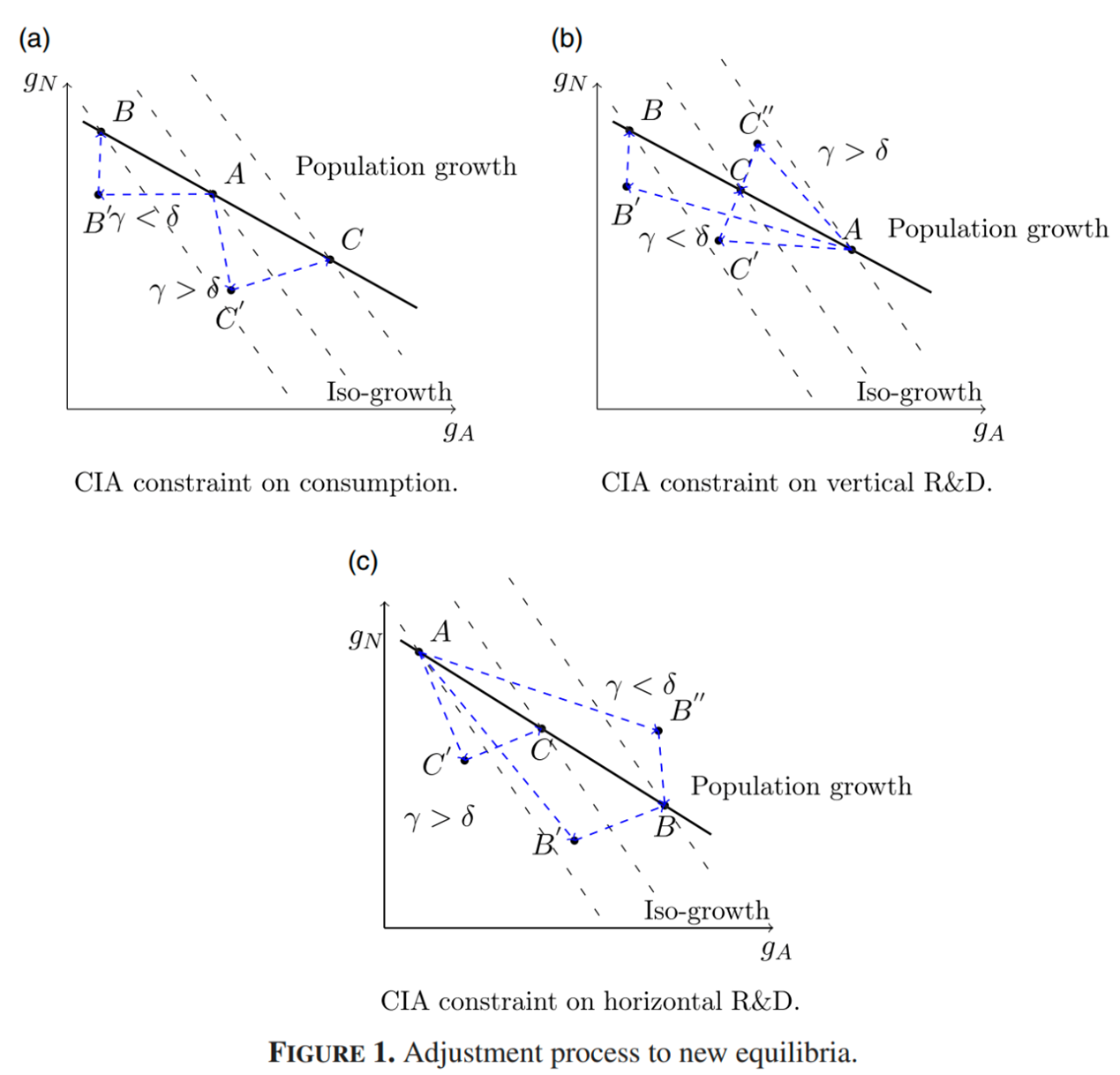
ABSTRACT
This paper investigates the effects of monetary policy on long-run economic growth via different cash-in-advance (CIA) constraints on R&D in a Schumpeterian growth model with vertical and horizontal innovations. The relationship between inflation and growth is contingent on the relative extents of CIA constraints and diminishing returns to two types of innovation. This model can generate a mixed (monotonic or non-monotonic) relationship between inflation and growth, given that the relative strength of monetary effects on growth between different CIA constraints and that of R&D-labor-reallocation effects between different diminishing returns vary with the nominal interest rate. In the empirically relevant case where horizontal R&D is subject to larger diminishing returns than vertical R&D, inflation and growth can exhibit an inverted-U relationship when the CIA constraint on horizontal R&D is sufficiently larger than that on vertical R&D. Finally, we calibrate the model to the US economy and find that the growth-maximizing rate of inflation is around 2.4%, which is consistent with the recent empirical estimates.
KEYWORDS
Inflation, Endogenous Growth, CIA Constraints on R&D
JCR CLASSIFICATION
Q3
JEL CLASSIFICATION
O30, O40, E41
Macroeconomic Dynamics
https://doi.org/10.1017/S1365100519000622
